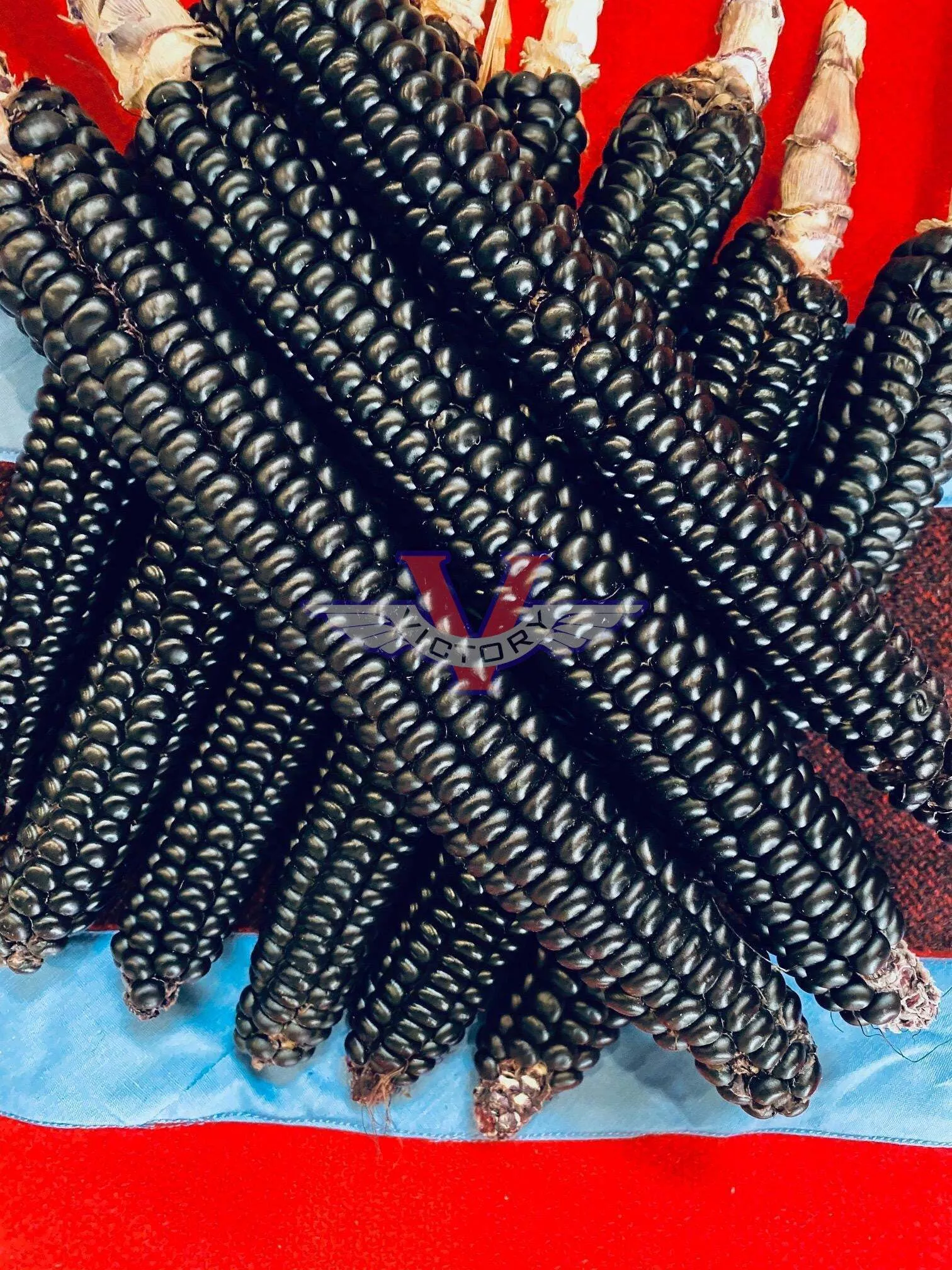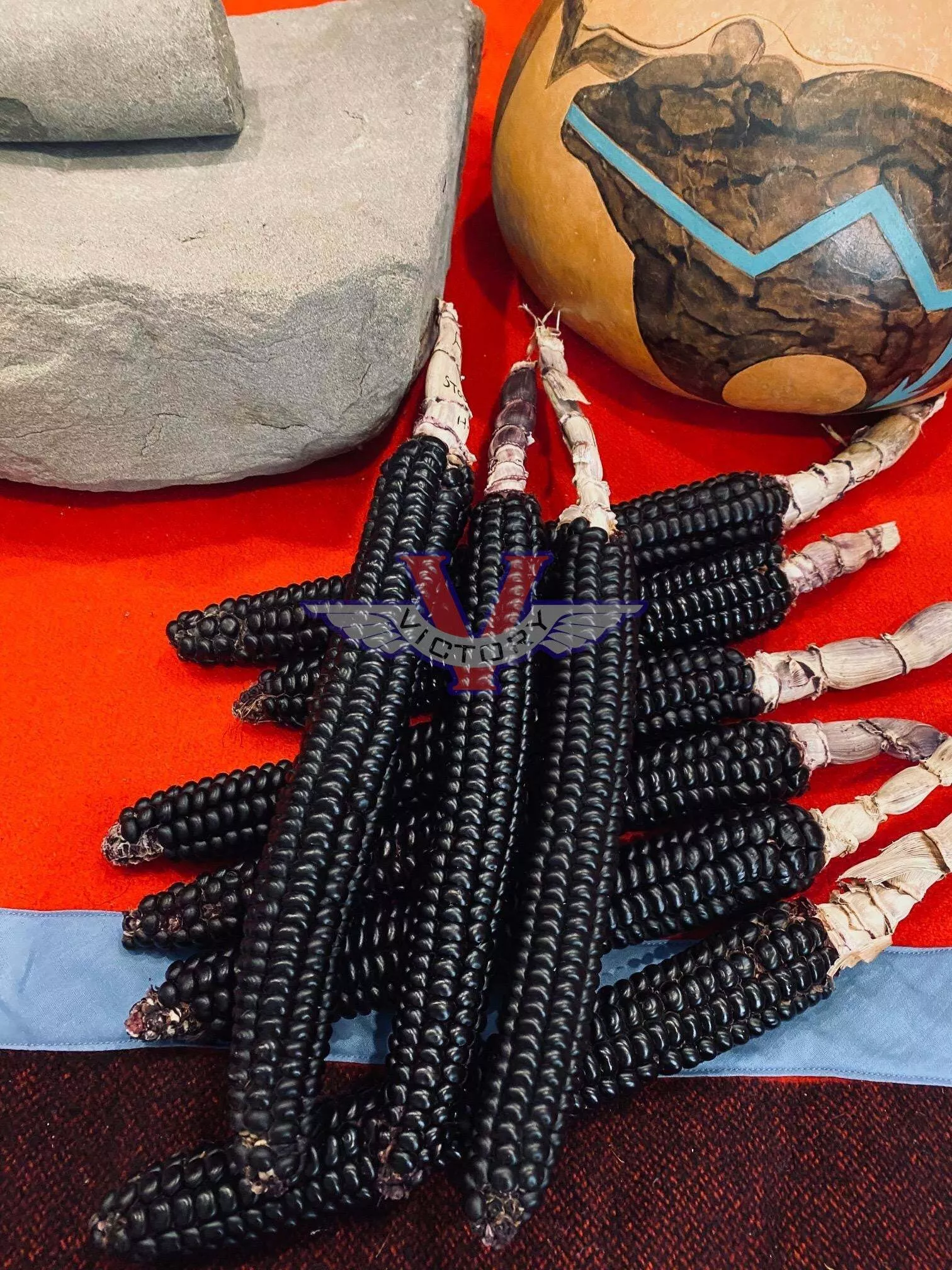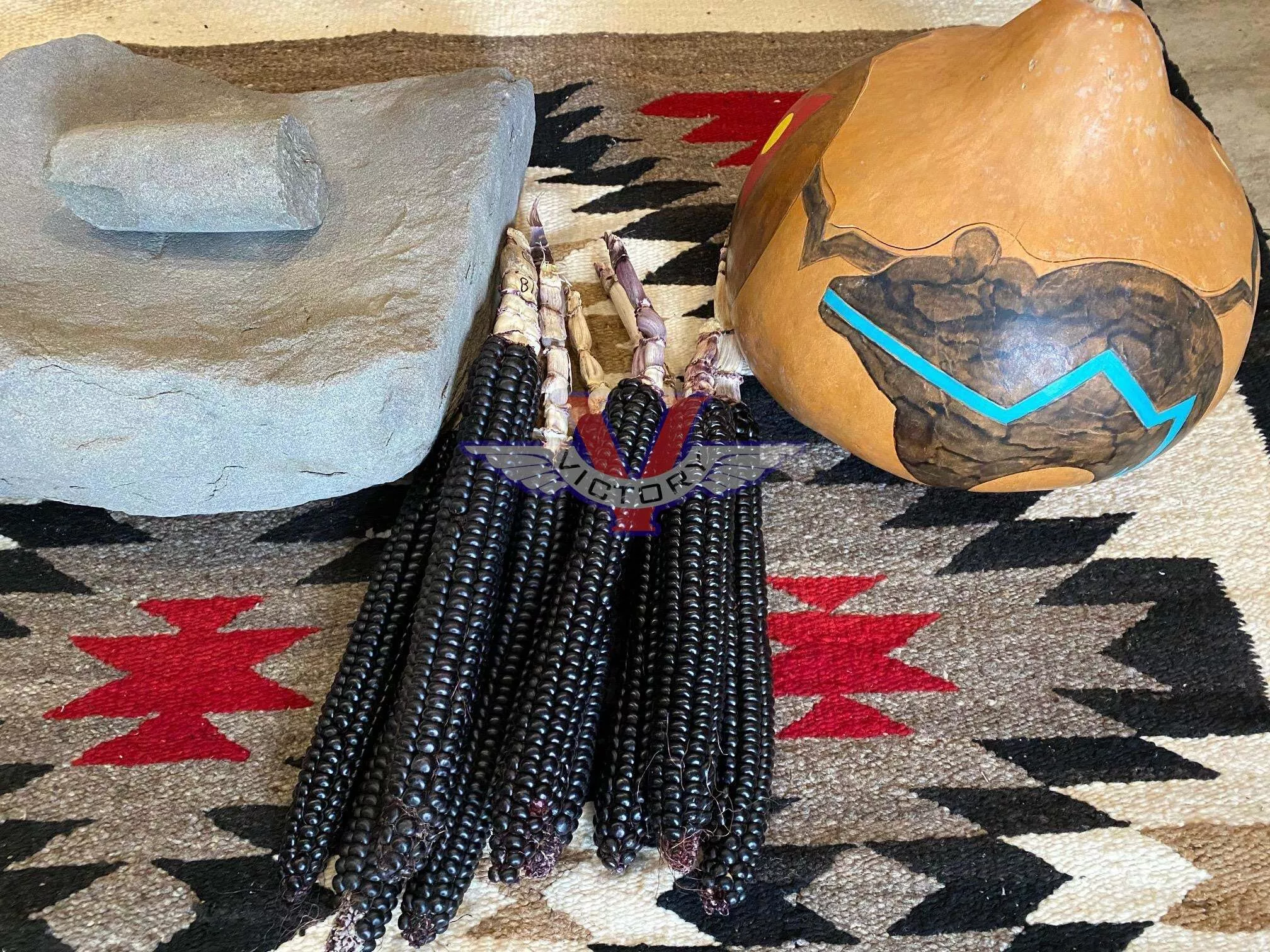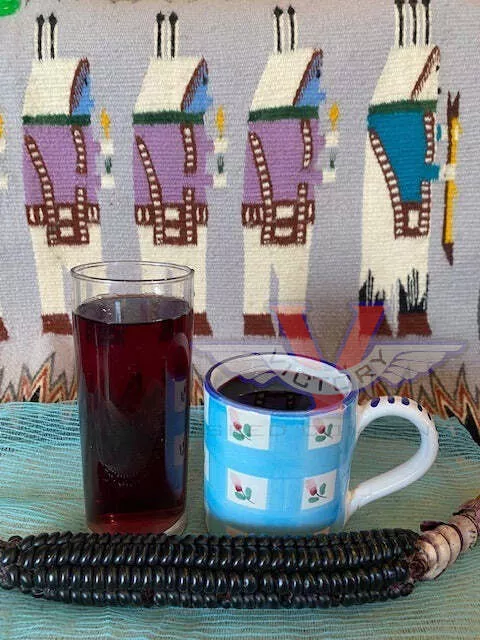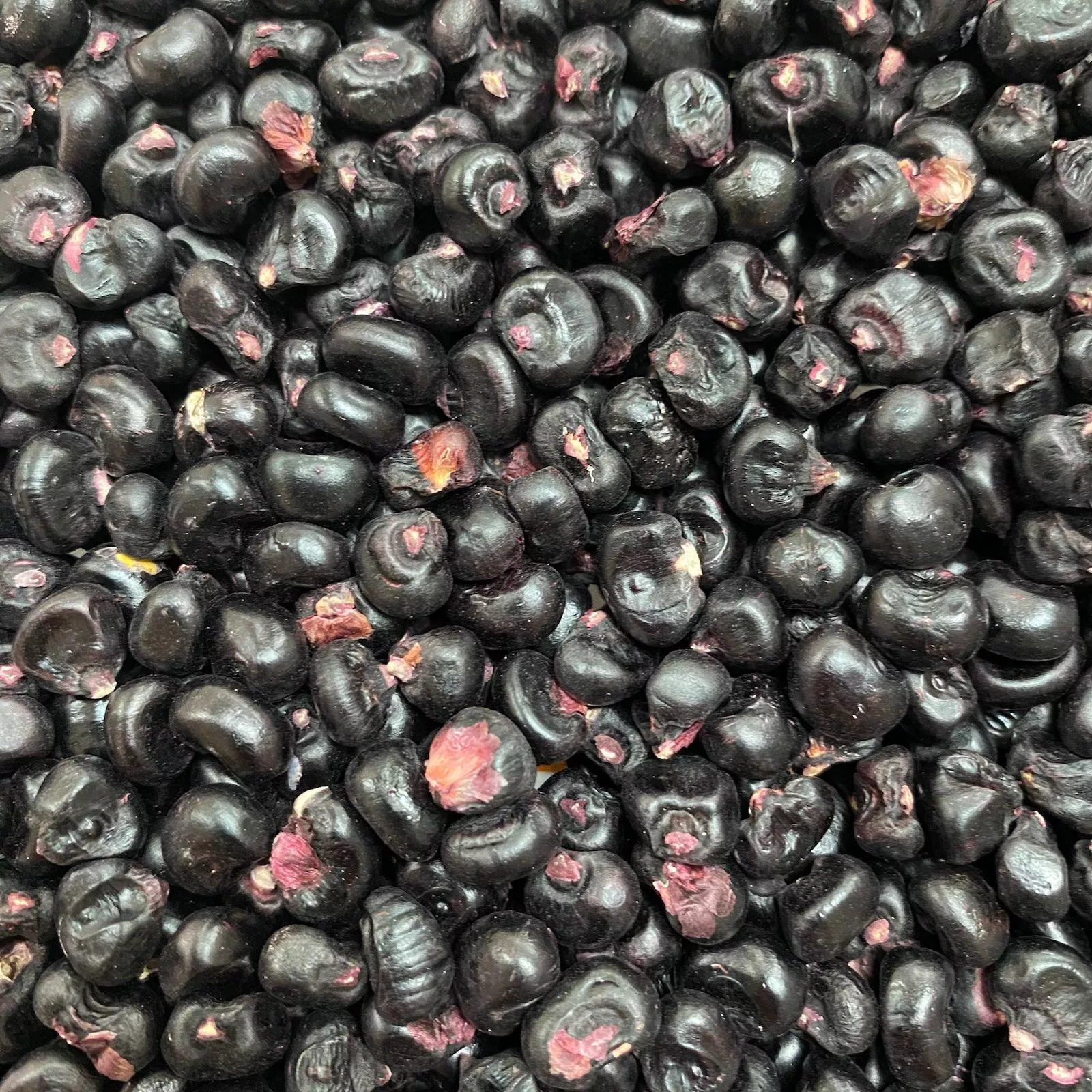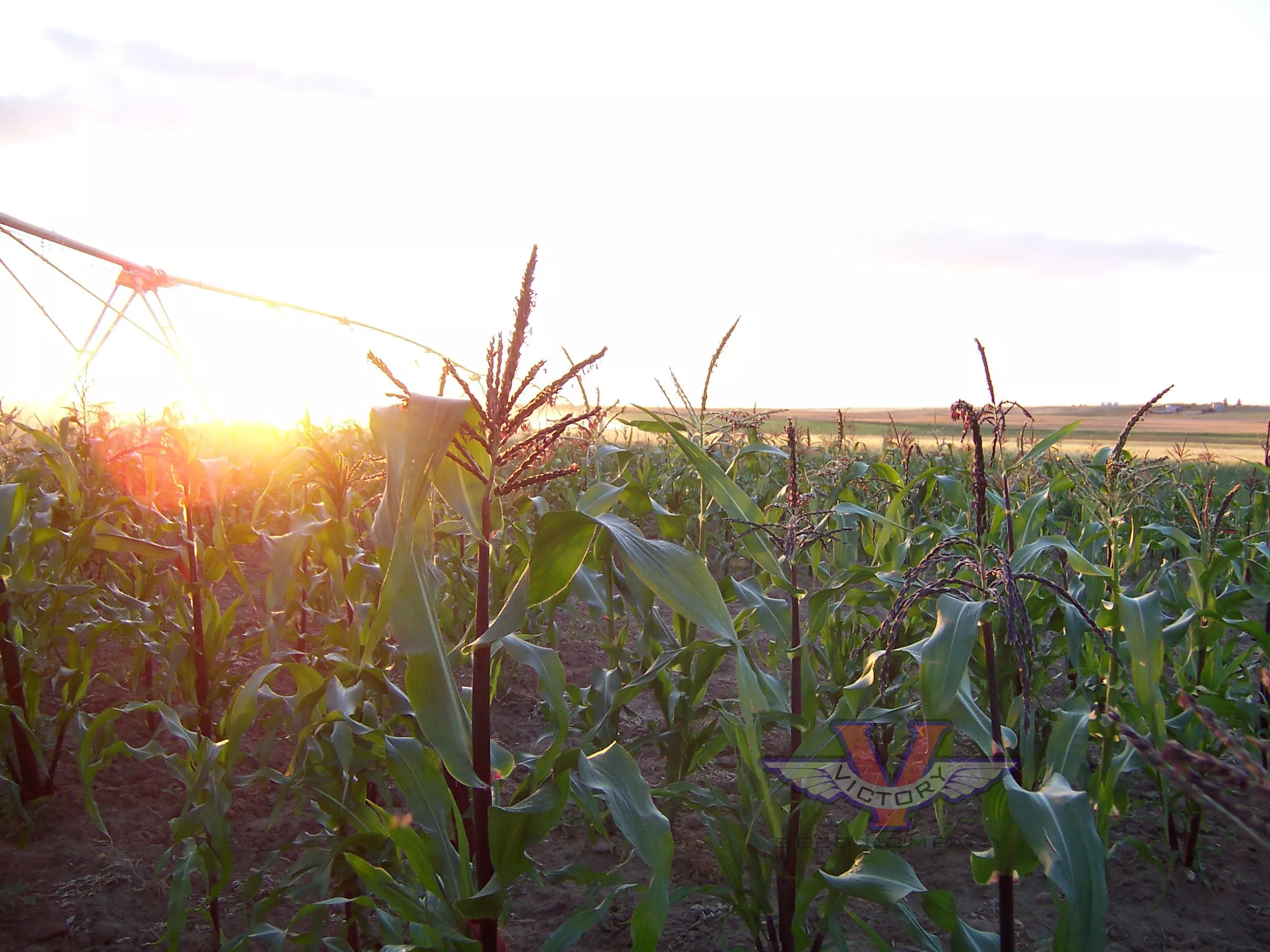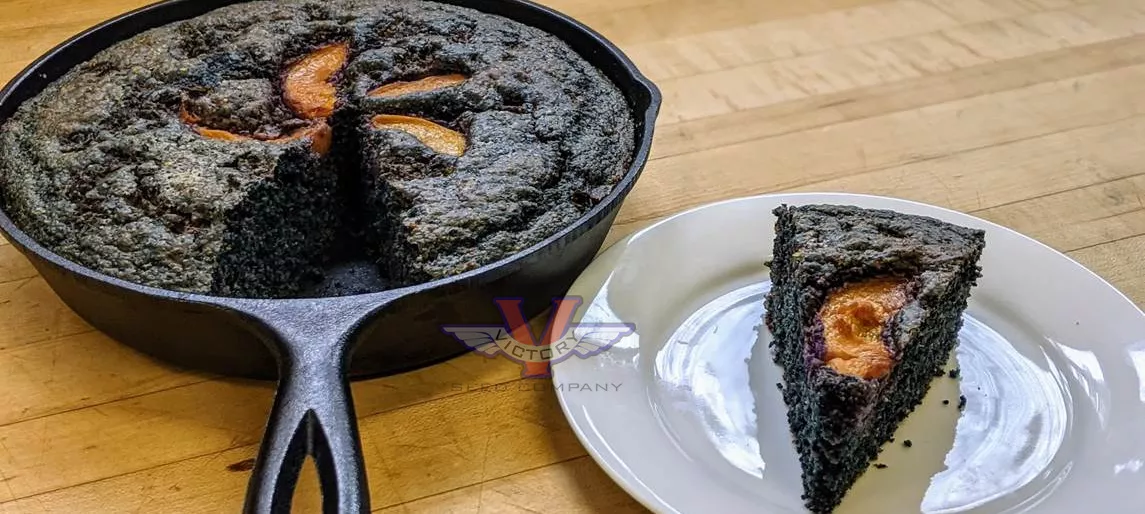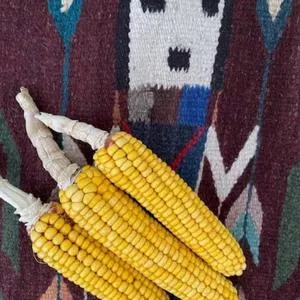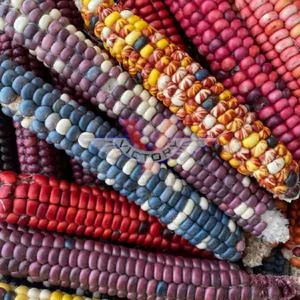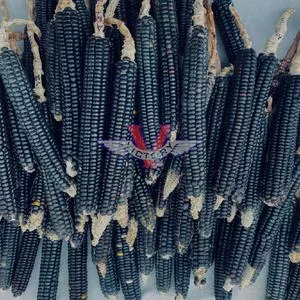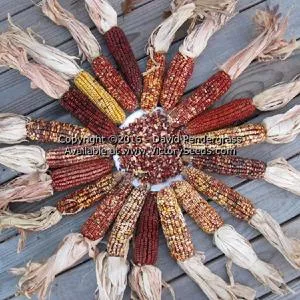






Montana Morado Maize
Price: $5.17
SKU: 31404721The seed we sell is produced and sold to us by its developer. Since 1970, Dave Christensen of Big Timber, Montana (Seed We Need®) has been continuously developing and refining this amazingly diverse corn variety. He has made it his life's work. We purchase our seed stock directly from Dave so by purchasing these seeds for your own garden, you are not only helping to support the seed variety preservation work of the Victory Seed Company, you are directly supporting another seed preservationist.
He started by rescuing about one-hundred Native American heirloom corn varieties. These corns had survived for centuries, under the most extreme environmental challenges, from cold springs to summer drought.
Montana Morado is the achievement that Dave accomplished in his quest for a black kernel corn. The beautifully striking dark purple kernels are very easy to grind into a soft flour. Tests show that these kernels have tremendously higher levels of anthocyanins (antioxidants) than blue corn. Dave said "If I could only give one of my lines of corn to the world, it would be Morado."
Relative maturity 90-100 days. Very fast maturing plants even in cold climates. Easy to grow. Productive 5' plants produce beautiful long slender ears with 8 uniform rows of shiny black kernels. The purple color is anthocyanins which have a wonderful antioxidant effect to stop aging of cells, for health and healing. It's high ORAC rating makes it an elite super food. Good for all food uses. The very soft flour starch grinds quickly into a soft purple flour for cornbread and tortillas with many times the health effects of blue corn flour.
Created for food security to face climate change with disappearing global water. It has the same stress hardiness, drought tolerance and wide adaptability that Painted Mtn is famous for all over the world. Family friendly. This naturally diverse open-pollinated corn population is capable of adapting to different locations & you can grow it year after year.
FURTHER INFORMATION
The purple and black Morado corns of Peru have attracted international interest in the medical community which found that the pigment (anthocyanins) have antioxidant and anti-inflammatory properties for human health and healing. They are said to help remove toxins and stop the aging of cells. They document healing properties for a long list of diseases.
Dave discovered the black gene in Navajo corn. It turns out that this is the only gene in the world that allows for two layers of pigment. None of the famous Morado corns from Peru nor the tropical countries have it. Dave's Morado tested significantly higher in antioxidant ability.
A Navajo elder told Dave that "Black is for healing". They knew it before we did!
Like Painted Mtn, all Dave's lines of corn are genetically diverse composites, NOT hybrids. All are open-pollinated populations designed so that the growers can maintain them forever.
Dave gives thanks to his partner, farmer Ole Norgaard of North Frontier Farms in pristine Shonkin, Montana, at the foot of the Highwood Mountains, the only place in the world where MMM is raised.
Sow seeds about 1½ to 2½ inch deep, 3 to 4 inches apart, in rows spaced 24 to 30 inches apart. Thin to 6 to 12 inches apart.
Planting Instructions:
'Montana Morado' is one of the most cold-hardy corn available for early spring planting. Unlike the common practice of waiting until all danger of frost has past, it was developed to survive planting in the cold, early spring soil. Developed at a 5,000 foot elevation in the mountains of Montana, it is bred to sit in cold, wet soil emerging with amazing vigor when it warms up.
Dave recommends planting by May 15 in the highest elevation where freezes and frost continue into June. In warmer climates plant it earlier. He tells us that, "You will not find anything on the market that matures faster." In fact, "Its ability to go into cold soil and to mature fast makes it possible to grow it near neighbors with GMO corn and minimize contamination. 'Montana Morado' will usually be done pollinating before commercial corns start spreading their pollen."
If you grow without irrigation, it is good to get the corn growing early so that it is well established before mid-summer heat and drought hits. In Harden, Montana we plant on April 15th and harvest it around August 15th as dry grain.
As far as spacing of plants goes, you can do anything with it that you want. There are many ways you can space it, some better than others, but the instructions can get too complicated. The shorter the season the more space it should be given. I would caution that the plants are short and should not be planted where they will be shaded out by taller plants.
I plant my large, dryland acreage with twelve inches between kernels in rows spaced three feet apart. If you irrigate, you can space them closer together. The most common error people make is planting them too closely.
If planting using the "three to four kernels in a hill" method, make sure there is plenty of space between the hills so the plants get water and sunlight. Hill planting has an advantage for survival because you can carry a bucket of water to them. And understand that the kernels are planted on level ground, or in an indentation to catch rain water, and they are only "hilled-up" later in the growing season to lock in the moisture. Do not plant kernels in a mound or hill at the start; the roots will be on top of the ground level. You want the roots to go deep to get water and to support the plant.
All corn varieties need to be planted in a block so that there are neighbors for pollen on all sides. If you plant in a straight row the wind can blow all the pollen away.
Harvest Information:
Pick the ears for dry grain or decoration when the husks are dry and the kernels are hard enough that you cannot make a dent in them with your fingernail. Many people pick the ears too early when kernels are still soft. If this is done they shrivel up and shrink and their beauty is destroyed. They cannot finish maturing once they have been picked.
Even though the ears look dry, there remains moisture deep within the cob. If you were to enclose them in a box, the moisture would cause them to sour and mold. You may let them dry longer on the plants if neither weather nor predators are damaging them. Otherwise hang them up or lay them out in the open until they are completely dry inside.
Customer Reviews:
By Jon (North Central Washington) on September 8, 2024
This corn is crazy! It survived a frost, my chickens eating the young shoots and then me transplanting them to a safer location next to my sweet corn. It pollinated before my sweet corn so it didn't cross. And then it survived a terrible drought that killed/stunted my sweet corn. And I never fertilized it and it grew some cobs that where 12 inches!! And matured to dry grain in 100 days!
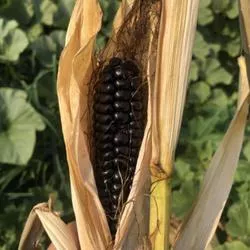
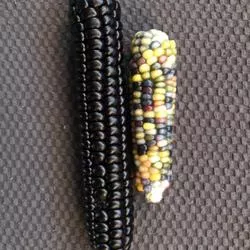
By Shanna Many Wounds (Elmo, MT) on August 11, 2023
This corn performed very well here in Elmo, MT. Really good flavor. These flour corns make excellent cornbread and tortillas, but they also taste really nice boiled and eaten fresh.
Five stars, totally reccomend.
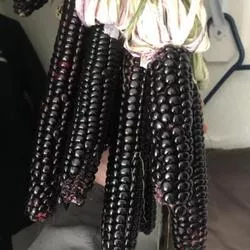
By HS (Southern CA) on August 9, 2023
Montana Morado Maize germinated easily. And it produced delicious, rich, flavorful corn meal. The cornbread tasted like cornbread dreams of tasting--with a more intense corn flavor than regular cornbread and looked like brownies in disguise. Unfortunately, the plants grew in a sub-optimal location for corn with not enough sun and probably too much competion for nutrients from neighboring trees and shrubs. Added to that, we had two months of cool weather and overcast skies due to a coastal fog belt. The corn plants were sad and deserved a better. If you have a sunny location, do not hesitate to grow Montana Morado Maize.

